The biggest lesson of the last twenty years of economic reforms is that growth comes from the 3Es -- Education, Employability and Employment.
This is reinforced by the view at the exit gate of the higher education system. India is in on a higher education emergency.
Our higher education system needs to deliver quantity, quality and inclusiveness. However, the current regulatory regime is sabotaging all the three requirements.
Five explicit costs which the current regulatory system imposes on our youth are:
Click NEXT to continue
'We need a massive expansion of our higher education system'
India's Gross Enrolment ratio of 11% is half the world average and 20% of developed countries. Of the 8 million who pass the Class 12 exam every year, only about 5 million enter higher education and almost 3 million disappear.
Most importantly, the 100% cut off of institutions like Shri Ram College of Commerce (I had joined this college in 1987) can only have three explanations.
First these kids are smarter than us; highly unlikely. Second 90 is the new 70; possible. Third, this is the price of a bag of rice in a famine; only 10 lakh kids took the Class 12 exam in 1987 but this year more than 1.2 crore kids took the exam, yet the number of seats has not moved much.
Our demographic dividend means that 1 million kids will join the labour force every month for the next 20 years; we have no choice, we need a massive expansion of our higher education system.
Click NEXT to continue
Adverse selection procedures affect students
The current regulatory regime uses a bunch of input-related factors (land, building, ratios, etc) and require a trust structure for operation. This creates a de facto license Raj in higher education.
This license Raj means that the key skill for education entrepreneurs is to get ahead in regulatory arbitrage and this leads to an adverse selection among education entrepreneurs because it biases the field in favour of politicians, criminals and land mafia.
This means that first generation entrepreneurs backed by third party capital are unable to create organisations that would add to capacity.
This creates big issues because the quality of so-called private education and private entrepreneurs becomes a self-referential argument against private education.
Click NEXT to continue
Enrollment ratios for reserved candidates less than national average
Image: Picture for representation purposes onlyPhotographs: SnapsIndia
Because of lower capacity and competition, the current higher education system is not inclusive when you unpack the Gross Enrolment ratio from a geographic, gender or disadvantaged group perspective.
More than 330 of our districts have lower gross enrollment ratios than the national average. The ratios for women and scheduled castes and tribes are between 25-35% lower than the national average.
While the case for reservation of seats in higher education is complex, the most important antidote to lack of inclusiveness will be a massive expansion of capacity.
Click NEXT to continue
Flexible education options need to be introduced
Image: Picture used for representation purposes onlyLower Lifelong Learning
Our higher education system is designed for full-time students between the age of 18-25. But besides the flow of new students from school, there are a number of participants in the labour force who would like to complete, continue to start their higher education but need more flexibility.
This flexibility today is sabotaged by the apartheid in distance education and the lack of a qualification corridor. The distance education solution is obvious; large campuses need to be legitimately and massively supplemented with four other classrooms; cloud, satellite, on-the-job and small study centres.
The lack of a qualification corridor between a 3-month certificate, a 1-year diploma, a 2-year associate degree and a 3-year degree has sabotaged vertical mobility.
The proposed National Vocational Educational Qualification Framework is a great move but requires a level of co-ordination between the Ministry of HRD, Labour, and the States, which is yet to be created.
Click NEXT to continue
On-the-job training with education can improve employability
Image: Pictured used for representation purposes onlyThe lack of employability (soft skills, computers, etc) is pervasive among many graduates. In fact, graduate unemployment is higher than normal unemployment.
This low employability arises for many reasons; lower competition, centralised setting of curriculum, no modularity, the lack of employer involvement and the lack of credit for formal apprenticeships.
India has only 2.5 lakh apprentices while much smaller countries like Japan (10 million) and Germany (6 million) have shown how integrating on-the-job training into learning can greatly improve employment outcomes.
We estimate that about 58% of India's youth suffer some degree of unemployability.
Click NEXT to continue
'Employment exchanges should become career centres'
Image: 'Employment exchanges should become career centres'Photographs: Satish Bodas
The policy agenda around skills is not impossible or unknown.
Employment Exchanges need to become public-private partnership career centres that offer counselling, assessment, training, apprenticeships and job matching. The Apprenticeship Act of 1961 must be amended to view an apprenticeship as a classroom rather than a job and shift the regulatory thought regime from push (employers under the threat of jail) to pull (make them volunteers).
The National Vocational Educational Qualification Framework must be agreed to by the States and the Ministries of Labour and HRD as the unifying open architecture tool for recognition of prior learning and vertical mobility between school leavers, certificates, diplomas and degrees.
Delivery systems are in the hands of the States and each State must create a skill mission or vocational training corporation tasked with building capacity and quality. The States should also create asset banks to make existing government real estate available for skill delivery.
Click NEXT to continue
Need for English skills
Photographs: Illustration by Uttam Ghosh
Schools and Colleges must selectively embed vocational subjects ,particularly soft skills, into their curriculum.
Click NEXT to continue
'Create a national network of community colleges'
Photographs: Rediff Archives
The regulatory cholesterol around national distance education (mail order, e-learning and satellite) must be reviewed to offer flexible options for workers already in the workforce and the geographically disadvantaged.
We must create a national network of community colleges offering two-year associate degrees; these colleges, rooted in the local ecosystem, will serve the informal sector (92 percent of employment).
This missing mezzanine layer -- their two year-programmes are not normal degrees on a diet but vocational training on steroids -- would bridge the gap between vocational education and training but make the system more inclusive.
Finally, we must create skill vouchers that will allow financially disadvantaged students to get trained, wherever they want at government expense.
Click NEXT to continue
Best time to change is TODAY
Photographs: Rediff Archives
No room for delay
It's late but not too late to change. Mughal Emperor Jahangir told his gardener in Kashmir that if a tree takes 100 years to mature, that's all the more reason to plant it as soon as possible.
In other words, the best time to start changing our higher education system was 1991 but the second best time is today.


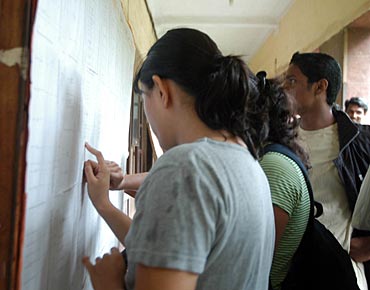
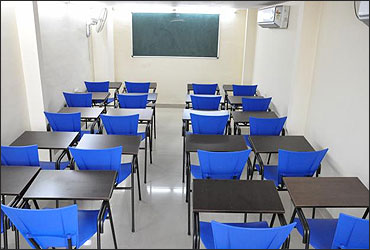
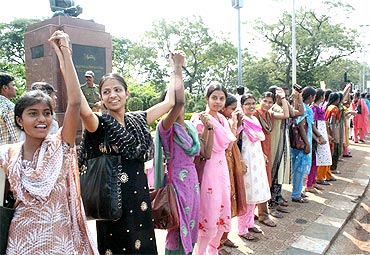

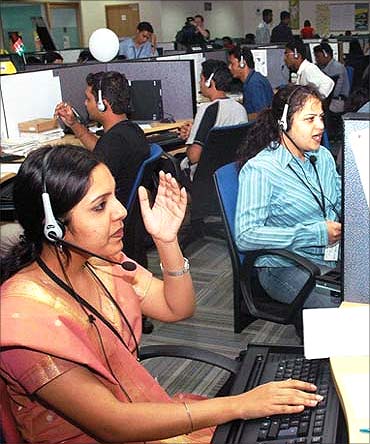
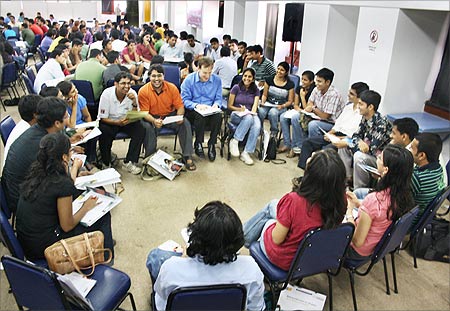


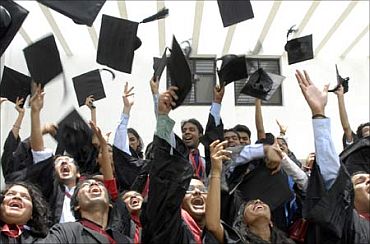
Comment
article